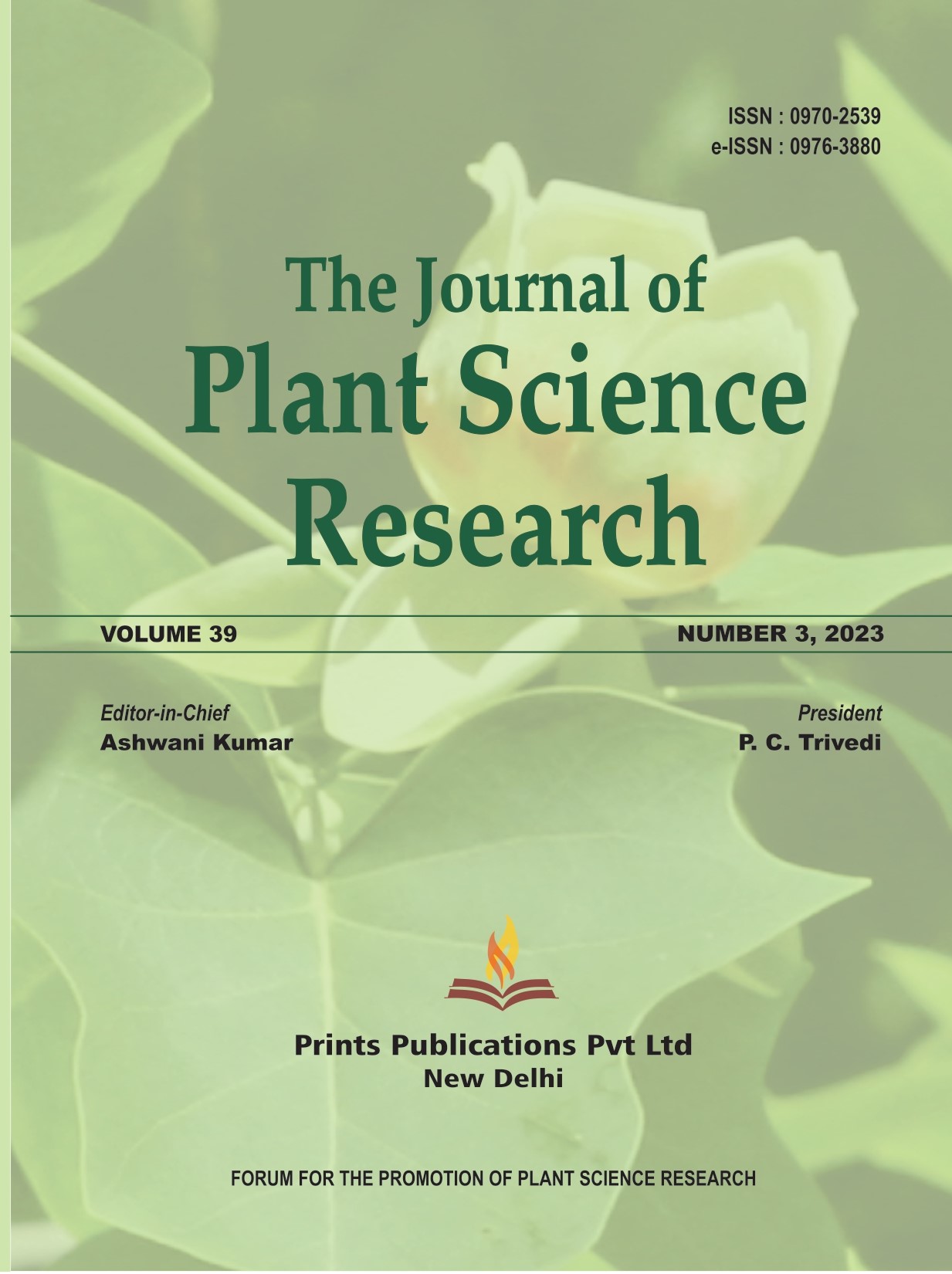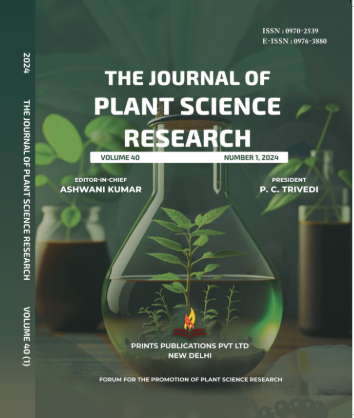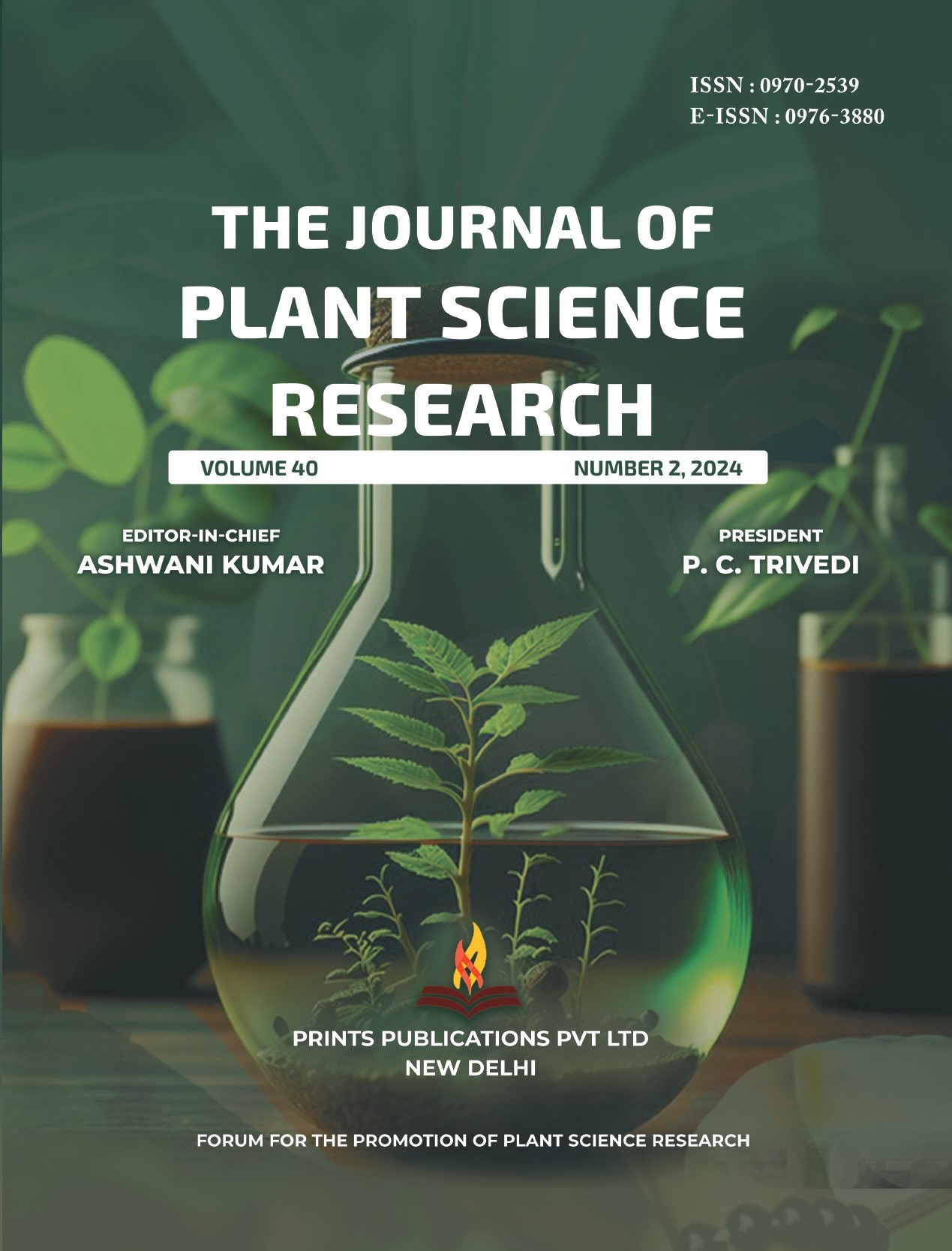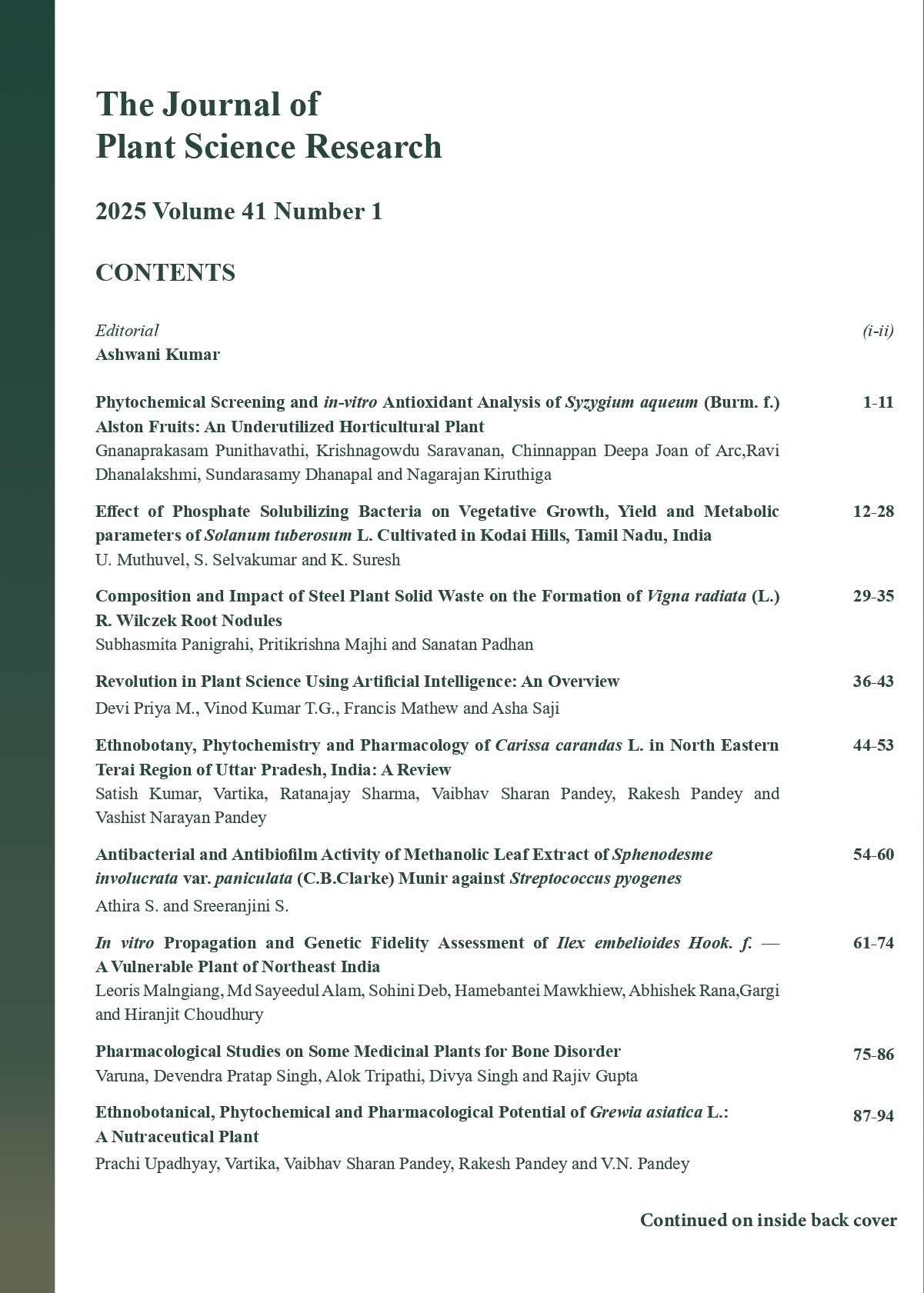The Journal of Plant Science Research - A UGC Care-Listed Journal
Published in Association with Forum For the Promotion of Plant Science Research
Current Volume: 41 (2025 )
ISSN: 0970-2539
e-ISSN: 0976-3880
Periodicity: Tri-annual
Month(s) of Publication: April, August & December
Subject: Botany
DOI: 10.32381/JPSR
Online Access is Free for Life Member
An Effective Protocol for the Micro-propagation of Spiny Coriander (Eryngium foetidum L.)
By : Roshan K. V. Remesh, Jyothish Madambikattil Sasi, Biju Dharmapalan, Dhanya D.S
Page No: 129-135
Abstract
Eryngium foetidum L., a biennial herb, is extensively employed as a medicinal plant in many tropical countries. Its cultivation as a spice plant has gained prominence in India, Vietnam, Australia, and other geographical locations. Moreover, this botanical specimen exhibits a wide array of ethnomedicinal applications, encompassing the treatment of thermal injuries, otalgia, pyrexia, hypertensive disorders, gastrointestinal sluggishness, convulsive episodes, bronchial spasms, abdominal discomfort, helminthic infestations, reproductive impairments, snake bites, enteric disturbances, and malarial infections. The objective of the present study was to establish the optimal nutritional conditions required for shoot multiplication. To achieve this, axillary buds were employed as the explant, and various media and plant growth regulators were tested to determine the most effective regeneration method. Out of the various concentrations of Murashige and Skoog (MS) media and hormones that were tested, the most effective plant regeneration, with a success rate exceeding 95%, occurred on a half-strength MS medium enriched with 1.0 mg L-1 of benzyl adenine (BA) and 0.1 mg L-1 of indole-3-acetic acid (IAA), resulting in the development of 5 shoots per explant. Subsequently, these shoots generated in vitro were successfully established with roots (85–100% success), and they were then transplanted to an experimental field with an efficiency rate of 65%. Overall, this study provides an optimized medium for the micropropagation of E. foetidum.
Authors :
Roshan K. V. Remesh : Assistant Professor, Sree Narayana Arts and Science College, Kumarakom, Kottayam, Kerala, India.
Jyothish Madambikattil Sasi : CSIR-National Institute of Science Communication and Policy Research (NIScPR), 14, Satsang Vihar Marg, New Delhi, India
Biju Dharmapalan : School of Natural Sciences and Engineering, National Institute of Advanced Studies, Indian Institute of Science Campus, Bangalore, India.
Dhanya D.S.: Department of Botany, Sree Narayana College for Women, Kollam, Kerala, India.
DOI: https://doi.org/10.32381/JPSR.2023.39.03.13






